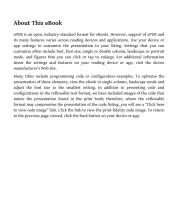VRF, MPLS, and MPLS Layer 3 VPNs - An Introduction to MPLS Operations
18 important questions on VRF, MPLS, and MPLS Layer 3 VPNs - An Introduction to MPLS Operations
What does MultiProtocol Label Switching (MPLS) use to make forwarding decisions?
What are reasons to choose MPLS over traditional IP Routing?
- Decreasing forwarding overhead on core routers, making them more efficient.
- Can forward other Layer 3 protocols than IPv4
- Supports multiple services; unicast routing, multicast routing, VPNs, TE (Traffic Engineering), QoS and Any Transport over MPLS (AToM)
What are the key points regarding the Label Information Base (LIB)
- Similar to RIB
- Recides in control plane of router
- Build from label exchange with other MPLS enabled routers.
- Higher grades + faster learning
- Never study anything twice
- 100% sure, 100% understanding
What is the Label Distribution Protocol (LDP)?
- Runs on the control plane
- Used to exchange label information with other MPLS enabled routers.
What are Label Switching Routers?
Edge LSRs are LSRs that are at the edge of an MPLS domain. They can add or remove labels from packets
Intermediate LSRs are LSRs that sit within the MPLS domain and primarily forward packets based on labels
What is the Forwarding Equivalence Class (FEC)?
What can the FEC classification be based on?
- Source Address
- Destination Address
- Source Port
- Destination Port
- Protocol Type
- VPN
What is the Label Switched Path (LSP)?
So the sequence of routers from the ingress LSR to the egress LSR.
Where is the MPLS Label header added and what is in the header?
- Label - 20 bits
- TC (QoS) - 3 bits
- S (Last in stack) - 1 bit
- TTL - 8 bit
Total 4 bytes (32 bits)
What is Label Distribution Protocol?
The industry standard method for hop-by-hop, dynamics label distribution in an MPLS network.
What happens after a LDP hello message?
In MPLS, what is Penultimate-Hop Popping?
This is done when the last router advertises a 'Pop' message instead of a label to the second-to-last router. This prevents the last router to have to do 2 lookups.
What is MPLS Inbound Lbael Binding Filtering?
For example to control the amount of memory used by stored label bindings.
What is an Entropy Label in MPLS?
- Used for Load Balancing.
- Deep Packet Inspection done by the first LSR to check for load balancing needs.
- Entropy Label added, which is used by all other LSRs.
- Other LSRs don't have to do DPI for load balancing check.
What is an Implicit Null Label in MPLS?
- An Implicit Null Label is used for Penultimate-Hop Popping.
- It is a reserved label with the value of 3.
- Receiving LSR knows to pop the label before forwarding.
What is an Explicit Null Label in MPLS?
- Used in conjuction with Penultimate-Hop Popping to preserve MPLS QoS EXP bits.
- by copying them into QoS IP Precedence or DiffServe.
- Reserved label with the value of 0.
What is the MPLS LDP Autoconfiguration feature?
- It automaticcaly enables LDP on all interfaces associated with a specified Interior Gateway Protocol (IGP).
- Supported IGPs are OSPF and IS-IS.
What is MPLS Traffic Engineering (TE)?
- Essentially Quality of Service for MPLS environment.
- Control Plane Protocol used for TE is Resource Reservation Protocol (RSVP)
- RSVP is actually a signaling protocol to request resource reservations from the network
- RSVP can generate and process Protocol Request Messages.
The question on the page originate from the summary of the following study material:
- A unique study and practice tool
- Never study anything twice again
- Get the grades you hope for
- 100% sure, 100% understanding































